Today the World Trade Organization released a confidential interim report on Boeing subsidies that the Wall Street Journal is already reporting criticizes payments to Boeing from the Department of Defense and NASA. And "without going into details," Ecology and Transport Minister Jean-Louis Borloo said, the report "finds in favour of the essence of the European Union's complaint."
UPDATE: Senator Maria Cantwell has issued a statement as well:
While I can’t discuss the details of the WTO’s preliminary ruling, I can say that the WTO panel rejected 75 to 80 percent of the European Union’s originally alleged subsidy claims. In dollar terms, the WTO found only a small fraction of the $20 billion in subsidies alleged by the EU. Most of those subsidies have long since been withdrawn. Importantly, the findings did not identify any existing prohibited subsidies, contrary to some media reports.
Allegedly unfair subsidies for Airbus and Boeing have been taking up a good deal of WTO staff time recently. France's stalwart defense of the WTO's ruling represents a marked shift since Airbus was found to have received some $20 billion in prohibited European subsidies in June. Then, the Wall Street Journal could find little WTO credibility on European shores:
Airbus officials said the EU would appeal the ruling. "There's not a single WTO case that hasn't been changed on appeal," an Airbus official said.
While on the one hand, the amount of aid appears roughly comparable in both instances (some $20 billion for Airbus and $24 billion for Boeing, which includes Washington state's tax breaks for the aircraft manufacturer), Boeing emphasized in a statement that there's subsidies and then there's subsidies....
Mayor McGinn announced that he'd talked the unions representing city employees into letting go of their two-percent COLA; instead they get 0.6 percent. The city's projected deficit for 2010-12 has grown by $11 million, to $67 million, since April. That kind of pressure has led the city to blackmailpressure MOHAI into giving up relocation funds won from the state, with MOHAI reaching DEFCON 1 ("We'll close, we swear it!") in short order.
Boeing got local-source religion. Microsoft worked on cementing their image as the Evil Empire. Amazon may have leaked Office for Mac 2011's ship date. Starbucks decided drive-through customers were really thirsty.
Cliff Mass says the only question is how strong our La Niña winter will be--cold and wet, or colder and snowier. While the Howard Hanson Dam situation has improved, "Now is not the time to relax," says King County Council's Julia Patterson. Wet weather isn't good news for residents of Redmond's mold-infested Riverwalk condos, but stay tuned--I hear the cavalry may be coming.
Around the neighborhoods, Capitol Hill residents learned they have deer and a start-up incubator. TechFlash took a tour of Belltown's PopCap Games. Eastlake's Floating Homes tour is Sunday, Sept. 12. "Seattle’s Landmarks Preservation Board voted to nominate the community-center building and steam plant at the 580-unit Yesler Terrace public-housing project for landmark designation."...
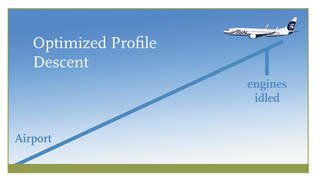 Since last summer, Alaska Air Group has been testing out its "Greener Skies" project at Sea-Tac. This week, they made eight landing approaches in a Boeing 737-700, using Required Navigation Performance (RNP) technology to make satellite- and GPS-optimized "continuous descents."
Since last summer, Alaska Air Group has been testing out its "Greener Skies" project at Sea-Tac. This week, they made eight landing approaches in a Boeing 737-700, using Required Navigation Performance (RNP) technology to make satellite- and GPS-optimized "continuous descents."
The results, with a 737-700 weighted as if carrying passengers, were eye-opening. During descent, the 737 used 400 pounds less fuel*, and cut emissions by 35 percent. Extrapolating those results to the Alaska/Horizon fleet at Sea-Tac, that's a savings of 2.1 million gallons annually--and not releasing the 22,000 metric tons of CO2 would be like taking 4,100 cars off the road.
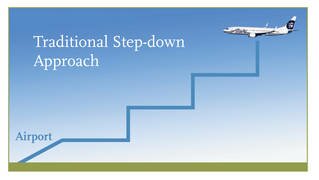 How does it work? As you remember from your last trip in an airplane, descents usually involve a set of turns and stair-step drops in altitude, as the plane works its way down from cruising at about 30,000 feet. You might remember how the plane almost glided for a bit, then the engines powered up strongly as the plane advanced along the "flat" part of the stair step.
How does it work? As you remember from your last trip in an airplane, descents usually involve a set of turns and stair-step drops in altitude, as the plane works its way down from cruising at about 30,000 feet. You might remember how the plane almost glided for a bit, then the engines powered up strongly as the plane advanced along the "flat" part of the stair step.
With an optimized descent profile (ODP), the plane descends from cruising altitude as in the illustration up top, with engines working much less. Instead of tower crews relaying the descent instructions in segments, the plane's path for landing is computed and cleared all in one go. Here's the FAA's description of ODP:...
The reception that Bombardier's fuel-saver C series is getting at the international air show, Farnborough, has Boeing and Airbus agreeing on one thing. Bombardier has got to go.
The Financial Times quotes John Leahy, chief of sales for Airbus, as saying:
If Airbus offers a new engine option and Boeing offers a new engine option on their 737, there is absolutely no business case for the CSeries at all. It ceases to exist at that point.
Both Airbus and Boeing are signaling--to potential buyers at Farnborough--that they are ready to move now on fuel efficiency if that's what customers need. Both the A320 and 737 models have been long-lived cash cows, and the airplane manufacturers have been waiting for a "Great Leap Forward" in engine design before committing to a major reworking. (Bombardier is predicting a 20 percent reduction in fuel use, and says its Pratt & Whitney engines will be four times quieter.)
Leahy mentioned September as a possible time for decision between "simply" adding new engines or redesigning the A320. According to the Boeing Twitter account, Commercial Airplanes CEO Jim Albaugh says, "our focus is extending 737, 777 and making them more efficient," and "decision on 737 most likely this Fall."...
Boeing's new Phantom Eye prototype elicits a welter of contradictions in the environmental pacifist.
It's powered by two 2.3-liter, four-cylinder Ford Ranger engines that have been converted to hydrogen fuel.
If all goes as planned, it'll be able to cruise at 65,000 feet for up to four days. Plus, it looks kinda cute. How hard would it be to airbrush him into this picture?
On the other hand, the visual similarity of Phantom Eye to a cartoon bomb strapped to a wing is evidence of its genesis in the bowels of Boeing Defense, Space & Security. Darryl Davis, president of Boeing Phantom Works (and who doesn't dream, really, of having that title on your business card), is quoted as saying Phantom Eye will usher in a new era of "persistent intelligence, surveillance and reconnaissance," and offer "game-changing opportunities for our military, civil and commercial customers."
With their 150-foot wingspan, future Phantom Eyes are envisioned as criss-crossing the globe at 150 knots (carrying up to a 450-pound payload). Boeing's goal is to extend the craft's time-in-air from four days to ten, so that three to four Eyes are all that would be necessary to provide portable global surveillance and communications. (Somewhere, Enemy of the State's keyhole satellite is sulking.)...
Photo courtesy Royal Australian Air Force
Just to clarify, we're talking planes here, not bioengineering.
Back in 2007, Australia put in an order for 24 Super Hornets from Boeing at a cost of nearly AU$3 billion. Five were delivered in March of this year, and another six F/A-18Fs have just reached Australian soil--"on time and on budget," as Boeing is quick to announce. (The F/A-18F is the two-seater model.)
The time-lapse video below, of a Super Hornet's construction, gives you an idea of how complicated it is to build a plane "able to perform virtually every mission in the tactical spectrum, including air superiority, day/night strike with precision-guided weapons, fighter escort, close air support, suppression of enemy air defenses, maritime strike, reconnaissance, forward air control and tanker missions."
The Super Hornet is the Navy's plane of choice--it's nominally a McDonnell Douglas model, adopted by Boeing after the Boeing-McDonnell Douglas merger, and sold to Congress on being a low-risk "upgrade" of the Hornet platform...though it's essentially a new plane. New or not, Boeing says every Super Hornet has been built on budget.
Yesterday afternoon came reports that Boeing had "grounded" its five 787 test planes because of problem with the tail's horizontal stabilizer.
This morning, Boeing says grounded isn't the right word--it's just that the test planes will see a delay of a few days for inspection before they fly again. "Boeing has made the decision to inspect the horizontal stabilizers on all flight test airplanes before their next flights to ensure any rework is completed as quickly as possible."
It'll take a little longer to inspect the 23 787s built so far, says the Seattle Times. Because it's a workmanship issue, some planes may be fine.
The culprit, once again, is Italian workmanship. Forbes says manufacturer Alenia improperly installed shims and over-torqued fasteners. This kind of thing is the reason you have test programs; Boeing says it shouldn't affect delivery of the first 787s to All Nippon Airways end of 2010.
With the weather ruling out many outdoor activities recently, I spent a few days catching up with the region’s rich collection of aviation museums. Though the Seattle area is known as a center of aviation, and can rightly claim to be a central force in aviation history, many local residents may not be aware of how extensive and interesting the various local museums celebrating this history are.
There are three major aviation museums between Seattle and Everett and all three are well worth a visit.
The Museum of Flight has more than 150 antique and historic planes on exhibit (and one space shuttle, lightly used, coming soon?). Located on the flight line of Boeing Field, the museum is a magnificent attraction. The collection features wonderful examples from the early days of flight, World War I and II, and all the way up to the Boeing 747, Concorde, and the SR 71 Blackbird. There is also a great selection of artifacts from the space age, including a nice selection of Russian space artifacts.
There’s an undeniable romanticism in viewing the old biplanes and fighter planes from two world wars. Up close, many of the planes seem larger than one imagines, while with others you can’t help thinking they were lucky to get off the ground.
Outside, in spacious viewing area, you can walk through the first Air Force One, first flown by JFK (and the scene of the famous photo of Lyndon Johnson taking the oath of office after Kennedy’s death). Considering the size and relative luxury of modern airliners, the Boeing 707 seams quaint, but still holds remnants of the swinging early days of the Jet Age. ...
(via Seattle Weekly) The short answer--before you ask!--is that no, currently there's nothing all that practical you can do with a scramjet except watch it go really, really fast. Boeing's X-51A "Waverider" was purposefully blown up at the end of its test flight, in fact, because there's no way to land the thing. (Perhaps now is a good time to clarify that it's an unmanned vehicle.) Says Boeing's news release about the May 26, record-setting flight:
The X-51A was carried aloft under the left wing of an Air Force Flight Test Center B-52H Stratofortress that took off from Edwards Air Force Base. It was released while flying at approximately 50,000 feet over the Point Mugu Naval Air Warfare Center Sea Range.
Four seconds later, a solid rocket booster from a U.S. Army tactical missile accelerated the X-51A to about Mach 4.5 before it and a connecting interstage were jettisoned. The X-51A's engine ignited on a mix of ethylene and JP-7 jet fuel. After a short period, the X-51A ran exclusively on JP-7 jet fuel. The flight reached an altitude of about 70,000 feet and an approximate speed of Mach 5....
(more)
BNET is doing a series on ten "boom towns" across the nation where job growth is predicted to enter the double-digit range between 2008 and 2018. Jobs of the future, they say, will go "to the cities with the industries and the entrepreneurial incentives in place to support a highly educated, tech-savvy workforce."
Seattle makes that boom town list, with a 12 percent increase. We're "building on past successes":
For decades, it spawned companies that grew into job-creation machines--and stuck around the area with those jobs: Boeing, Microsoft, Amazon.com, Starbucks, Costco, Expediters International, and even retail stalwart Nordstrom, which opened its first store there at the beginning of the 20th century.
While not free of the scent of PR puffery, this is based partly on Bureau of Labor Statistics projections, with a side bet on demographic trends: right now, the largest two age groups are 50-year-olds and 20-year-olds. The hypothesis is that 50s set will come to Seattle for the pre-retirement lifestyle, while the 20-somethings will flock to the UW.
Before you yawn, and produce a thick volume of past "boom towns of the future" that are still anxiously awaiting the railroad to arrive, consider this rundown of quarterly results:
- Starbucks beat analysts' expectations
- Amazon's sales soared
- Microsoft set a revenue record
- Boeing's profit margins are up
And Nordstrom had strong March sales and Costco is increasing its cash dividend. This is exactly the kind of thing that makes Seattle seem like its own little business oasis.
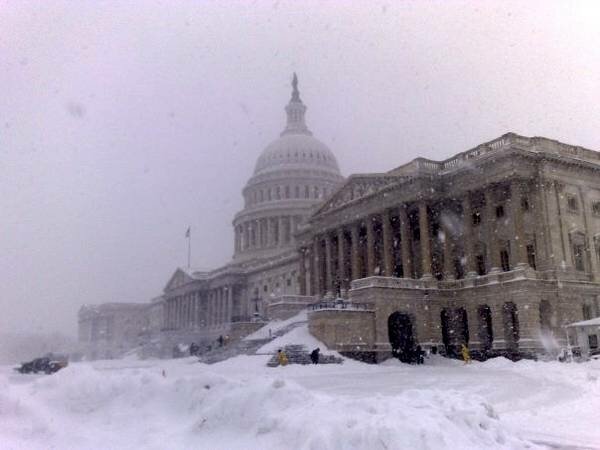 Meanwhile, in Washington, D.C. (All photos: Michael Austin)
Meanwhile, in Washington, D.C. (All photos: Michael Austin)
While Cliff Mass explains why we just had our warmest January ever recorded, enjoy a picture of the blizzard that's blanketed Washington, D.C., courtesy of our D.C. bureau. The word is that it's bad...very bad.
 Closer to home, West Seattle Blog found a local Prius tie-in to the Toyotathon Recall that's been in the news all week. However, Toyotas alone can't be responsible for the four crashes in 90 minutes that WSB reported on. This is precisely why I only take the water taxi over there. Safer.
Closer to home, West Seattle Blog found a local Prius tie-in to the Toyotathon Recall that's been in the news all week. However, Toyotas alone can't be responsible for the four crashes in 90 minutes that WSB reported on. This is precisely why I only take the water taxi over there. Safer.
We had politics all over the place this week. A Publicola investigation resulted in the resignation of one of Mayor McGinn's top advisors. The 520 replacement "A+" design got raked over the coals by citizen groups and various politicos, while Eastsiders and business-types cried "How long, O Lord, how long?" Judges told the state legislature to fork out for education, and the Seattle School Board to reconsider those "new math" textbooks. Our homegrown pot initiative got its official name: I-1068. Tim Eyman went down to Olympia, predictably....
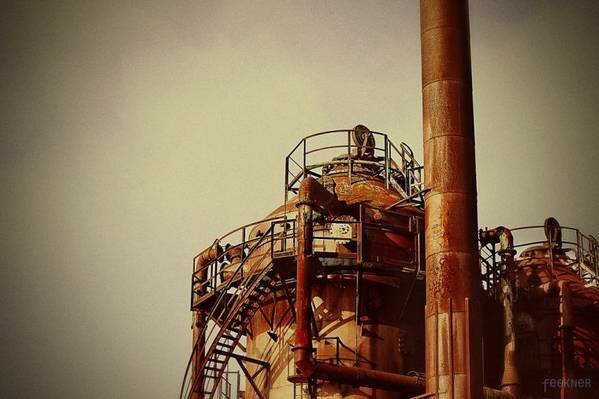 The rusting husk of Gasworks Park, a fitting metaphor for our elected government. Photo by our Flickr pool contributor feekner.
The rusting husk of Gasworks Park, a fitting metaphor for our elected government. Photo by our Flickr pool contributor feekner.
Late last month, I wrote about Oregon's special vote for Measures 66 and 67, two bills passed by the legislature and signed by the governor that were sent to the voters as a referendum, which raised taxes to help close a budget shortfall. One raised the minimum corporate tax for the first time since 1931, while the other was a modest increase in the income tax for high-earners (Oregon has an income tax but no sales tax). Both measures passed with substantial margins, with roughly 54 percent in favor to 46 percent opposed.
The vote was closely watched nationally because Oregon, like Washington, is a state known for its anti-tax fervor. Oregon had its own Tim Eyman, has caps on property tax increases, and has repeatedly rejected new tax increases. But faced with dramatic cuts to crucial services, Oregon voters banded together with their elected representatives and passed two very simple measures that kept the state working.
Our fearless leaders in Olympia, on the other hand, have done virtually nothing. While Gregoire has stated she wants to "buy back" some of the slash-and-burn budget cuts she originally proposed (as a matter of state law, which requires her to present a balanced budget--from the beginning, she made clear she did not support that budget), her alternate budget still relies extensively on cuts, with a large portion of new revenue expected from federal stimulus money. The House has introduced a bill (HB 3176) that would generate $210 million in new tax revenues by mostly closing loopholes, but that's a pittance compared to the overall $2.6 billion shortfall over the biennium....
We had a short holiday week here on The SunBreak, but the news never stops--tragically, in the case of the double homicide on Beacon Hill that left a mother and her daughter dead, and the father, Daniel Thomas Hicks, the lead suspect.
The place to go for unsavory details on WaMu's demise continues to be the Puget Sound Business Journal: "Documents released by JPMorgan in response to the subpoena now show that JPMorgan had a plan to acquire WaMu from regulators more than two months before the government signaled it planned to seize and sell the Seattle thrift." Meanwhile, Nordstrom's is consolidating its Seattle office space in the old WaMu tower, a big win for the Seattle Art Museum, and Seattle in general, says Jon Talton.
Ironically, the Boeing Philip M. Condit Professor of Business Administration at the UW's Foster School of Business, Dick Nolan, argued that Boeing's global outsourcing strategy may have been a huge competitive mistake.
The weather hasn't stopped, but it does seem on a break, with what Cliff Mass calls a "classic mid-winter ridge" creating dry, low wind conditions. Local areas are seeing a good deal of morning fog, and in fact Mass advises you to book your SeaTac flights late in the day this time of year, to avoid fog delays.
In local health karma, an unvaccinated King County woman contracted measles after a trip abroad: "People who might have been exposed to the disease would be expected to develop the characteristic skin rash of measles December 18th and January 10." Most of you have been vaccinated and have nothing to worry about.
Fueling our transit obsession, Mayor-elect Mike McGinn let drop that he's considering putting a light rail extension up to a vote in 2010. The Seattle Transit Blog approves. They also have the rundown on new transit fares and payment options in 2010: As of January 1, "all King County Metro fares (except for the ages 6-18 fare) will go up 25 cents. For most of us that means $2.00 off-peak, $2.25 one-zone peak, $2.75 two-zone peak."...
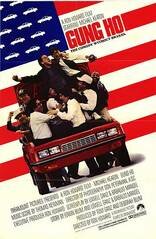 It's like a Bizarro-world "Gung Ho"!
It's like a Bizarro-world "Gung Ho"!
Over at the Harvard Business Review, blogger Dick Nolan (Boeing Philip M. Condit Professor of Business Administration at the UW's Foster School of Business) thinks Boeing's Trojan Horse moment was in outsourcing that famed Boeing know-how. Writes Nolan, "Before the 787, Boeing had retained almost total control of airplane design and provided suppliers precise engineering drawings for building parts (called 'build to print')."
Not that that has changed entirely--ironically enough, here's this recent headline from the Wall Street Journal: "Boeing takes control of plant." But that's a South Carolina plant. For the 787, Boeing has constructed 300-partner supply chain that spans the globe.
Continues Nolan:
Boeing effectively gave Tier 1 suppliers a large part of its proprietary manual, "How to Build a Commercial Airplane," a book that its aeronautical engineers have been writing over the last 50 years or so. Instead of "build to print," Boeing provided suppliers with performance specifications for parts and components and collaboratively worked with them in the design and manufacturing of major components such as the wing, fuselage section, and wing box.
The only problem is that once Boeing has trained and retooled its far-flung suppliers, it will have planted a worldwide crop of competitors. China, Nolan thinks, is the most likely to run with the commercial airplane ball. Airbus has already agreed to a Chinese final-assembly plant, work that it, like Boeing, has tried to keep "stateside."
So forget South Carolina: Asia's lower-paid workforce is learning from the best how to build a plane from nose to tail, and how to put it together and sell it for about fifteen percent less (per Nolan) than Airbus or Boeing. It's a fait accompli, a matter of when, not if.
As of 10 a.m. this morning, you can take light rail from downtown to the SeaTac Airport in 36 scenic minutes. There's enough space under most seats to stow baggage if you're holding carry-on in your lap. The fare is $2.50 one-way. Here's a photo gallery of our preview trip. (In other transit news, everyone wants a piece of the First Hill streetcar.)
On December 15, 2009, at 10:27 a.m., Boeing's 787 Dreamliner lifted off at Paine Field for a test flight. For three hours, it flew back and forth over the Sound, until increasingly rainy weather called a halt to the flight. Testing will continue for about nine months, and involve three 787s and about a dozen flight crew. Even Ryanair's brinksmanship on its huge 737 order couldn't dampen Boeing spirits.
Other local bidness: Weyerhauser announced it's becoming a real estate investment trust, McDonald's double-dog-dared Starbucks to provide free Wi-Fi, and the Seattle Times triumphed temporarily over death (taxes).
Seattle left last week's record low temperatures behind, and started focusing on eating outside. The Mobile Chowdown will return to Interbay on January 9. City Hall and SDOT are making street-food-friendly noises regarding regulatory changes in 2010, including making it easier for vendors to set up on the outskirts of city parks. We also mistakenly pumped 10 million gallons of sewage into Elliott Bay.
Sports fans had an early Christmas, discovering Husky QB Jake Locker, pitcher Cliff Lee, and hothead Milton Bradley under their tree.
As the PSBJ reports, Ryanair has walked away from an order of 200 Boeing 737s, an order that would have more than doubled the size of the Irish budget airline's fleet. It's not exactly a crushing blow for Boeing, since "The airline added Friday that its decision won’t affect its delivery of 112 737s in the next three years."
Seattlepi.com quotes Ryanair CEO Michael O'Leary as saying, "We have no plans to reopen discussions with Boeing or any other aircraft manufacturers," which lends credence to the view that Ryanair is rethinking its breathless rate of expansion. That is the subtext in Bloomberg's story on the jet deal, which would have been worth around $14 billion, according to the Financial Times.
Bloomberg quotes analysts who point out that with over 100 737s on the way, Ryanair is in no pressing hurry to make a deal if it thinks the market for planes might dip further during the recession. In fact, Boeing and Ryanair had agreed on the price, but Ryanair was demanding unnamed "contractual terms and conditions" that Boeing balked at adding.
O'Leary had one card left to play this hand--How much was it worth to Boeing not to "lose" one of the largest deals in commercial airplane history? Not enough. They'll shuffle the cards and start over.
Boeing's 787 Dreamliner lifted off from Paine Field on its maiden test flight this morning. There was live video coverage at all the local networks. The Seattle Times called the takeoff at 10:27 a.m. , for those of making notes in your diary.
There's also this handy real-time flight tracker from FlightAware.
 "Swan on Lake Washington 1987" comes with a story from shawnmebo: "This swan was mean as hell. He had a bad habit of attacking people. People with dogs. Let's just say it didn't end well for him."
"Swan on Lake Washington 1987" comes with a story from shawnmebo: "This swan was mean as hell. He had a bad habit of attacking people. People with dogs. Let's just say it didn't end well for him."
After a week of icy temperatures and steam fog, things meteorological are finally warming up...to snow. Cliff Mass says "not a lot" of snow is expected Sunday, but "enough to whiten the place." No matter how much we get, it should melt off when temperatures rise to the 40s next week. Still, to be on the safe side, now is a good time to start following Metro's crowd-sourced snow reports on Twitter.
You may not believe this--that's where FlightBlogger's video will come in handy--but Boeing has been taxi testing its 787 Dreamliner this morning. Here's a picture of the 787 moving under its own steam. Brakes look good.
Earlier in the week, Elliott Bay Book Company officially announced its move to Capitol Hill, with a spring opening planned. The Seattle Times took a sneak peek at the new digs. What'll be new: 85 parking spaces associated with the building, central heating, and--if they turn a profit--streaming videos of their author readings. There's also talk of a café "likely" run by Brasa's Tamara Murphy, which may create an indie café singularity in the Pike-Pine neighborhood.
In other local bidness news, Birgitta is having a going-outta-business sale this weekend, and Google informed us that our sponsor Central Cinema is one of Seattle's favorite places.
In the ghost-of-local-news-past category, there are questions about WaMu's seizure that just won't go away. The FDIC says Horizon Bank, Evergreen, and Rainier Pacific are all under-capitalized. Seattle Bubble also noted that Seattle's November foreclosures were up 45 percent from last year....
 "Lake Union" from the Space Needle, courtesy of The SunBreak Flickr pool stalwart Slightlynorth
"Lake Union" from the Space Needle, courtesy of The SunBreak Flickr pool stalwart Slightlynorth
Zeitgeist, Google calls it. For me, the list echoes of Lawrence Durrell's Spirit of Place. These are ten search terms that are unique to Seattle in their popularity. Some need no explanation, like the leader "sounders fc." The Sounders Football Club has singlehandedly brought back scarf-wearing to Seattle sports fandom, if that gives you any idea. I think they could bring back umbrellas! Seriously.
But what about "bellevue college"? Yes, Virginia, there really is a college in Bellevue (previously Bellevue Community College). In 2008-09 it conferred its first Baccalaureate degrees. It's the third-largest higher learning institution in Washington, that's all. 37,000 people attend.
Next we have "seahawks 2009 schedule." What does that tell us? That the Seahawks play San Francisco this weekend, for one thing. But more importantly, we learn that Seattleites are prone to rubbernecking at train wrecks. Can't help themselves.
Next! Let's take a trip to the "snoqualmie casino," with its daily blackjack tournaments, 1,700 slot machines, and ten poker tables. It's 170,000 square feet, with eight restaurants, lounges, and bars. There's an 11,000-sq.-ft. ballroom. Michael McDonald is going to appear there this weekend.
Here is something historic: "west seattle blog" is fifth on the popularity list. It is the only time that West Seattle has been fifth at anything! Tracy Record and Patrick Sands run the blog night and day, and have full-time since Tracy left KCPQ in December 2007. Today they have great shots of the moonrise from West Seattle.
I think it has to be another record that "uw libraries" makes the list. Libraries in Seattle enjoy the fame and adulation that, say, Studio 54 did in New York. A lot of you can recall Suzzallo and Odegaard without hesitation, but what about the Miller Horticultural Library? What about the K. K. Sherwood Library at Harborview? The UW libraries contain 7.14 million volumes.
I don't imagine I need to spend much time on "myuw.com." Big research university, brings in about $1 billion in grants annually, has over 4,100 full-time faculty and almost 50,000 students, there's a football team....
Photo courtesy of The SunBreak Flickr Pool's Great Beyond
Happy Halloween! If you haven't made plans yet, The SunBreak sponsor Central Cinema is having a Lost Boys Quote-Along--head over to sponsor Scarecrow Video for a list of other Halloween cinema options. I'll be out shopping for a handlebar mustache.
The big business story of the week was Boeing's selection of North Charleston, S.C., over Everett, for its second 787 Dreamliner assembly line. The Everett Herald supports the union's account that Boeing was dumbfounded when they agreed to the no-strike provision, and that North Charleston had really won the Boeing sweepstakes back in February.
The H1N1 virus vaccine is still in short supply, but the government is releasing extra Tamiflu for children who are infected. Tamiflu's (rare) side effects mean it's not for sniffles. Mayoral candidate Joe Mallahan has come down with the flu and is taking Tamiflu. CHS has the October King County H1N1 statistics: so far 135 people have been hospitalized and two have died. And speaking of health news, I chatted with Michael McCarthy of the online Seattle Health Guide.
The only campaign news worth repeating is that I have voted and don't need to pay attention to any of the last-minute mud-slinging and elbow-throwing. Alea jacta est, Seattle. Those political mailers are going right into the recycling. For the sake of fair and balanced reporting, though, here's Stephen Colbert on R-71....
Reading the IAM District 751 machinists union response to Boeing's North Charleston selection for its second 787 assembly line reminded me strongly of the dockworkers union in The Wire. President Tom Wroblewski, in his wounded outrage, talking about "betrayal," "loyalty," and a man's "word," summoned up shades of Frank Sobotka.
"We remain committed to the Puget Sound," said Jim Albaugh, president and CEO of Boeing's Commercial Airplanes division, giving "committed" a fairly capacious meaning that could soon include "My new phone number begins with area code (843)."
And state Senate Minority Leader Mike Hewitt (R-Walla Walla) said, "I think we could have enacted some of the reforms we needed last year," referring to reducing business costs in worker's compensation and unemployment insurance.
It's an education for everyone, which arrives, ironically, just as Boeing is cutting back on picking up its employees' lifetime-learning tab. Yesterday KIRO 7 asked whether this was the "first step in Boeing leaving the state."
It is hard to square any of these responses with Boeing having moved its corporate HQ to Chicago in 2001. For most of the decade, they have not even geographically been a hometown corporation that might be expected to "do right" by local workers, where management might share a personal "commitment" to the region, and were concerned simply with paying their fair share of taxes. They have been rent-seeking, to the evident detriment of their production line's timeliness...
Jilted Snohomish County Executive Aaron Reardon says, "The decision has been reached." The Seattlepi.com has a few more Boeing details, but the long and the short of it is that Boeing did what everyone expected them to do. The second 787 Dreamliner assembly line will be sited in North Charleston, S.C. Local TV station WYFF 4 is reporting that it will bring 12,000 jobs to the area. Yesterday South Carolina legislators approved a significant welcome basket of tax breaks and incentives, contingent on Boeing investing $750 million into the area over the next seven years.
UPDATE: Boeing has announced the second 787 assembly line will be sited in North Charleston, S.C.
The Seattle Times says that talks between the Boeing machinists union and management have broken down. Boeing wanted a 10-year no-strike guarantee, and the machinists wanted Boeing to pretend they haven't been planning on moving the second 787 production line to Charleston all along. (It's like no one even listens to the Times editorial board any more.)
Sen. Patty Murray tried to get the two sides to talk today, but it's as if Boeing management doesn't quite have their heart in it.
The South Carolina legislature is busy pushing through a Boeing-sized welcome package that is contingent upon "a business entity" investing $750 million and creating 3,800 jobs. The Times quotes Otis Rawl, chief executive of the South Carolina Chamber of Commerce, as saying that those numbers came from "the entity that's looking at the state."
The Times' Jon Talton called this last week: "When Boeing executives announce a second 787 line in North Charleston, S.C., it will be the biggest non-surprise of the year." The second biggest non-surprise of the year, apparently, will be Boeing's announcement that the 787 Dreamliner won't fly before the end of the year. Morgan Stanley is fed up....
The good news is that if Boeing does announce it's moving more operations to South Carolina, Seattle can expect at least a decade's delay based on the airplane maker's recent performance. Bedeviled to the tune of $1.7 billion in losses on its 747-8 program, Boeing cannot seem to make a deadline stick: "The company unexpectedly announced that the first new 747-8 jumbo jet, slated to fly in November, now won't leave the ground until next year. The postponement contrasts sharply with confident assertions made by the head of the program just six weeks ago..." reports the Seattle Times.
I don't know how sharp the contrast is. Boeing has become the home of confident assertions with a six-week lifespan.
Each time a delay or cost overrun is announced, it sets off a new round of blame-assignation. This time a leading theory is that Boeing diverted its dwindling engineering resources to the vastly more troubled 787 Dreamliner program at the expense of the 747-8. (Any day now I expect to hear that the Dreamliner team...
Most Viewed Stories
- Flash! A Mob Takes Qwest Field at Half-Time
- Opinion: An Atheist's Defense of "Everybody Draw Mohammed Day"
- Why Will Smith, Joe Montana, and Wayne Gretzky Are All Coming to Issaquah Tonight
- Gather 'Round, Children, and Hear the Story of Courtney Love's Bumbershoot Secret Show
- Film Forum Spotlights Leonard Cohen, Small-Town Ohio
Top Rated Stories
- Stars, Ice, and Impossible Beauty: Backpacking in the North Cascades [Photo Gallery]
- PAX Prime 2010: Nerds In The Mist
- Allez au Cinema! Avec "The French Project"
- Wheedle's Groove's Soul Men, Interviewed at Bumbershoot 2010 [Photo Gallery]
- (Don't) Save it for Later: The English Beat's Dave Wakeling, Interviewed


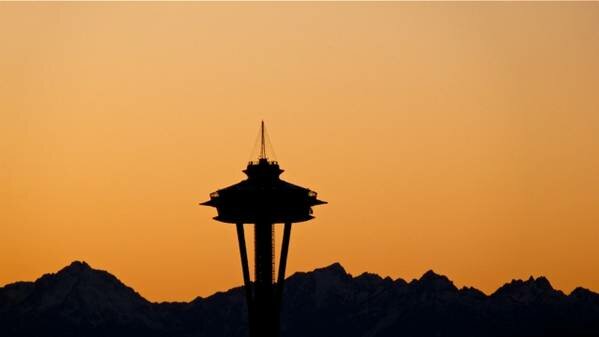

Most Recent Comments